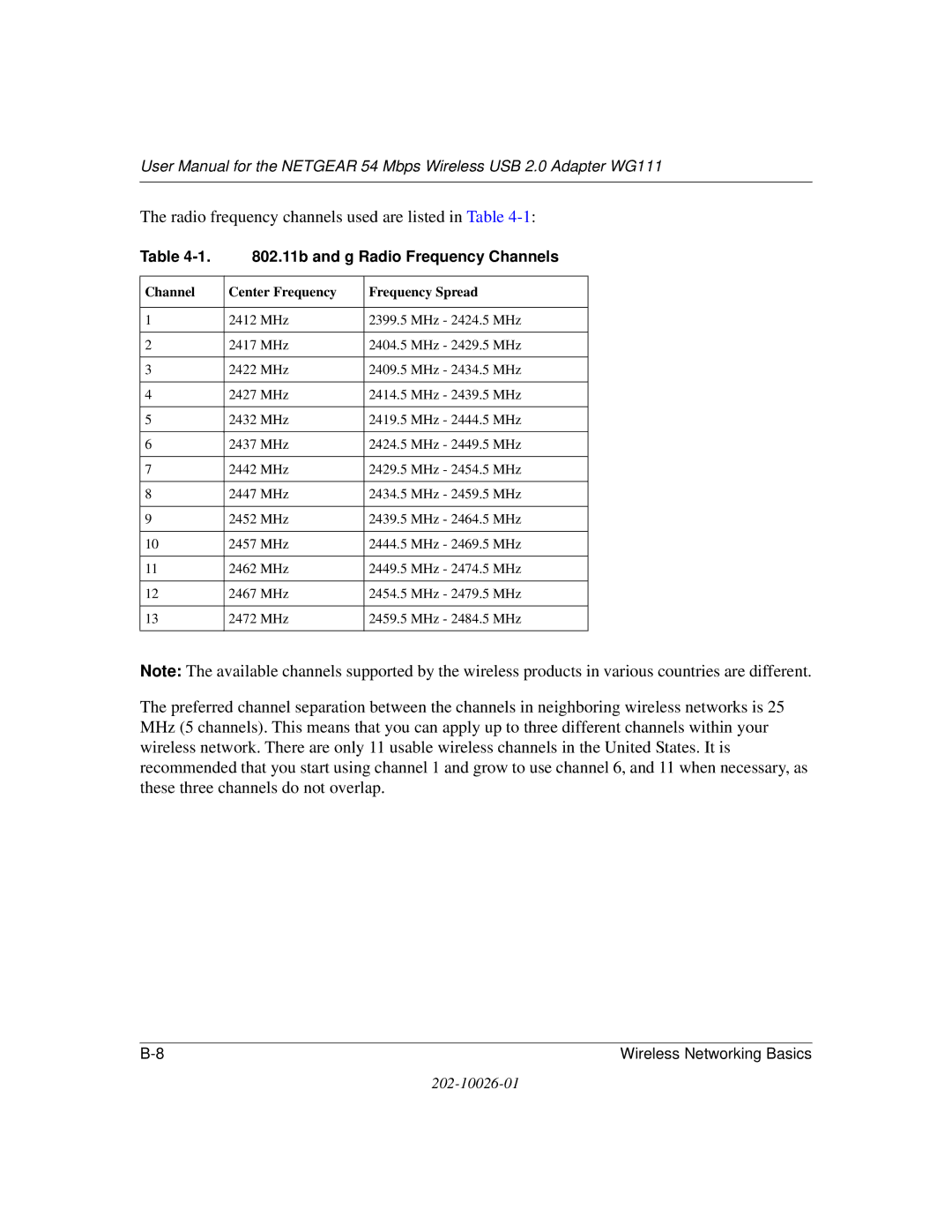User Manual for the NETGEAR 54 Mbps Wireless USB 2.0 Adapter WG111
The radio frequency channels used are listed in Table 4-1:
Table | 802.11b and g Radio Frequency Channels | |
|
|
|
Channel | Center Frequency | Frequency Spread |
|
|
|
1 | 2412 MHz | 2399.5 MHz - 2424.5 MHz |
|
|
|
2 | 2417 MHz | 2404.5 MHz - 2429.5 MHz |
|
|
|
3 | 2422 MHz | 2409.5 MHz - 2434.5 MHz |
|
|
|
4 | 2427 MHz | 2414.5 MHz - 2439.5 MHz |
|
|
|
5 | 2432 MHz | 2419.5 MHz - 2444.5 MHz |
|
|
|
6 | 2437 MHz | 2424.5 MHz - 2449.5 MHz |
|
|
|
7 | 2442 MHz | 2429.5 MHz - 2454.5 MHz |
|
|
|
8 | 2447 MHz | 2434.5 MHz - 2459.5 MHz |
|
|
|
9 | 2452 MHz | 2439.5 MHz - 2464.5 MHz |
|
|
|
10 | 2457 MHz | 2444.5 MHz - 2469.5 MHz |
|
|
|
11 | 2462 MHz | 2449.5 MHz - 2474.5 MHz |
|
|
|
12 | 2467 MHz | 2454.5 MHz - 2479.5 MHz |
|
|
|
13 | 2472 MHz | 2459.5 MHz - 2484.5 MHz |
|
|
|
Note: The available channels supported by the wireless products in various countries are different.
The preferred channel separation between the channels in neighboring wireless networks is 25 MHz (5 channels). This means that you can apply up to three different channels within your wireless network. There are only 11 usable wireless channels in the United States. It is recommended that you start using channel 1 and grow to use channel 6, and 11 when necessary, as these three channels do not overlap.
Wireless Networking Basics |
